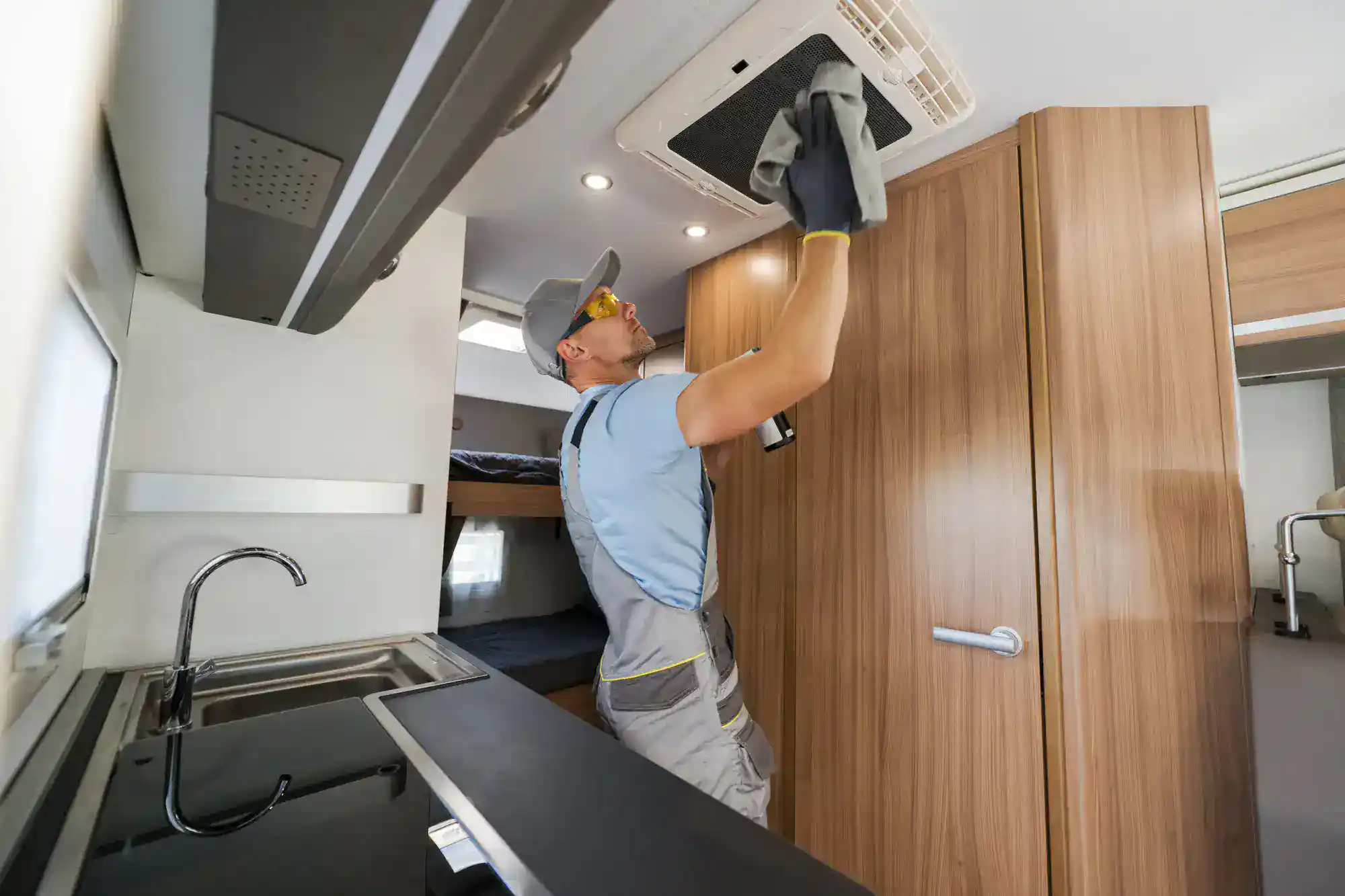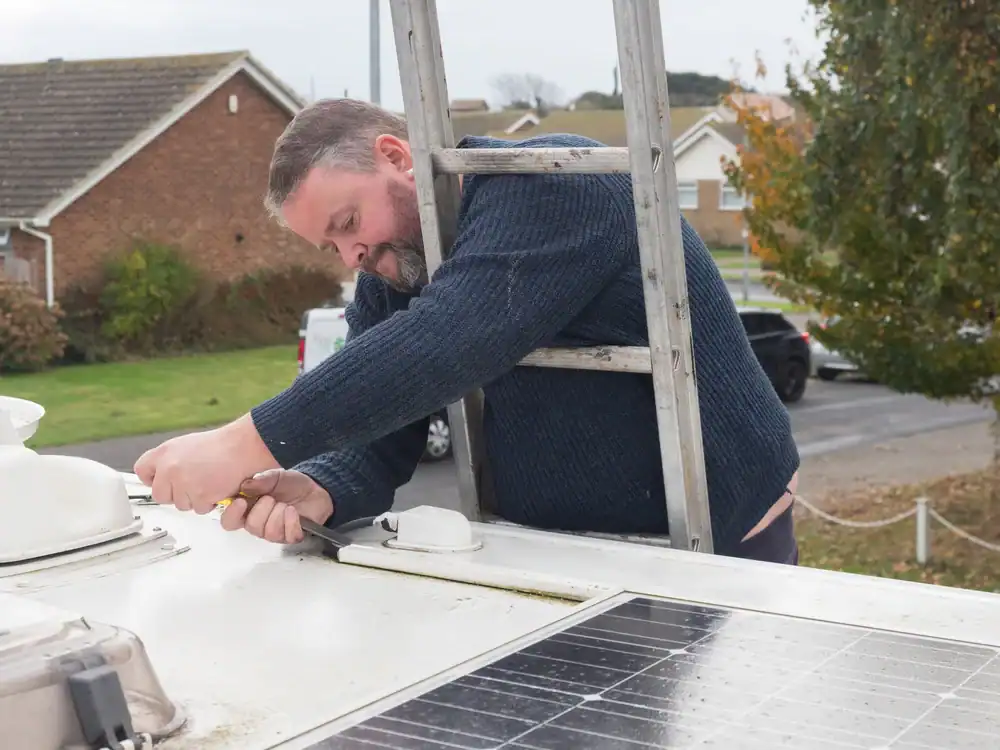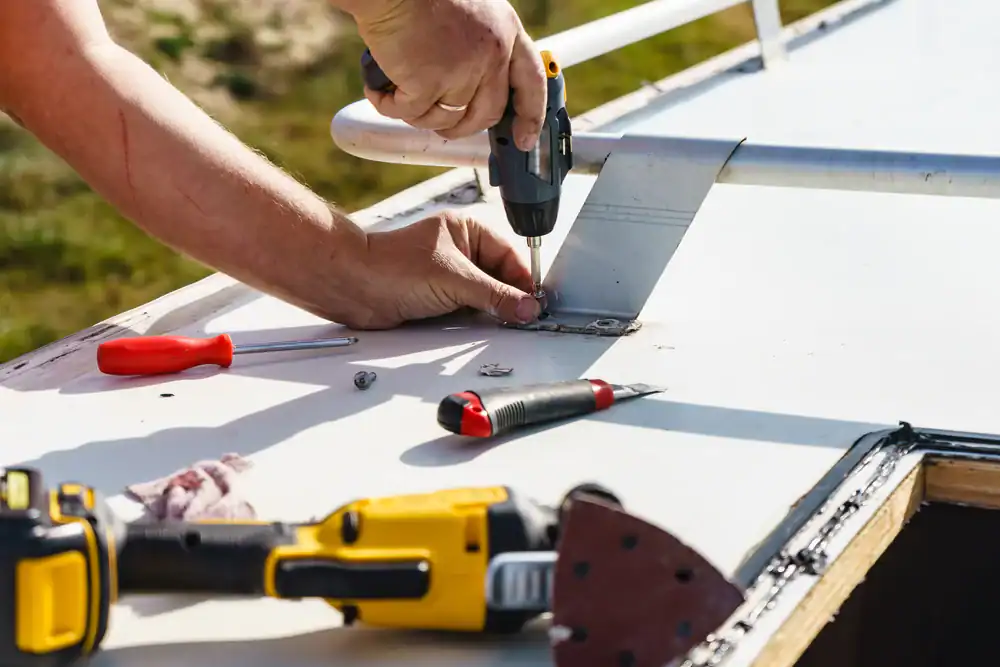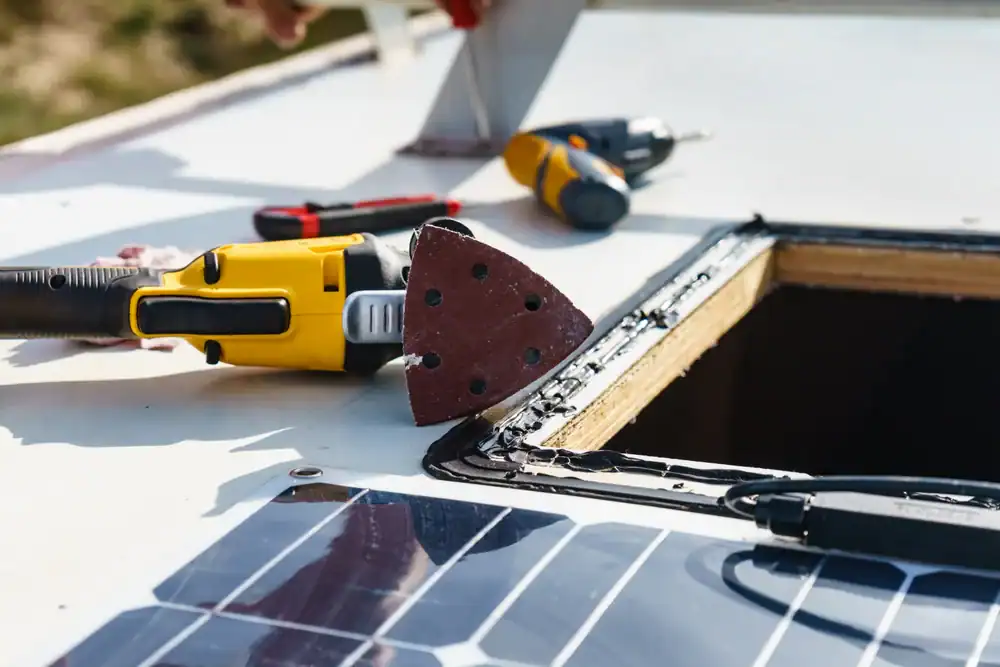Summary:
RV Roof Inspection Schedule: Monthly, Seasonal, and Annual Checks
The frequency of your RV roof inspections depends on how much you use your rig and where you store it. Active travelers should do a quick visual check monthly, while seasonal users can get away with thorough inspections every three months. However, certain times of year demand extra attention regardless of your travel schedule.
Spring inspections are critical after winter storage, when temperature swings and moisture can cause sealants to crack or separate. Fall inspections prepare your roof for winter weather and catch any damage from summer travels. If you’re in Durham County, our humid summers and occasional severe weather make these seasonal checks even more important.
What to Check During Your Monthly RV Roof Inspection
A monthly inspection doesn’t mean climbing up with tools every time. Start with a walk-around from ground level, looking for obvious signs of trouble like water stains on the exterior walls, loose or missing roof components, or debris buildup.
When you do get on the roof, focus on the high-risk areas first. Check all seams and joints where different materials meet, especially around vents, air conditioners, and antenna mounts. These spots move slightly as your RV travels and settles, making them prone to separation. Look for cracks in the sealant, areas where the sealant has pulled away from the surface, or any soft spots that might indicate water penetration.
Pay attention to the roof membrane itself, whether it’s rubber, fiberglass, or aluminum. Rubber roofs show their age through chalking, cracking, or permanent indentations. Fiberglass develops stress cracks, especially around mounting points. Aluminum roofs can show corrosion or loose panels. Don’t ignore small problems thinking they’ll wait – they won’t.
The gutters and drainage systems need attention too. Clogged gutters force water to sit longer on your roof, increasing the chance of finding a way inside. Clear out leaves, dirt, and any debris that could block proper drainage.
Signs Your RV Roof Needs Professional Attention
A monthly inspection doesn’t mean climbing up with tools every time. Start with a walk-around from ground level, looking for obvious signs of trouble like water stains on the exterior walls, loose or missing roof components, or debris buildup.
When you do get on the roof, focus on the high-risk areas first. Check all seams and joints where different materials meet, especially around vents, air conditioners, and antenna mounts. These spots move slightly as your RV travels and settles, making them prone to separation. Look for cracks in the sealant, areas where the sealant has pulled away from the surface, or any soft spots that might indicate water penetration.
Pay attention to the roof membrane itself, whether it’s rubber, fiberglass, or aluminum. Rubber roofs show their age through chalking, cracking, or permanent indentations. Fiberglass develops stress cracks, especially around mounting points. Aluminum roofs can show corrosion or loose panels. Don’t ignore small problems thinking they’ll wait – they won’t.
The gutters and drainage systems need attention too. Clogged gutters force water to sit longer on your roof, increasing the chance of finding a way inside. Clear out leaves, dirt, and any debris that could block proper drainage.
Durham County Climate Considerations for RV Roof Maintenance
North Carolina’s climate presents specific challenges for RV roofs that owners in drier climates don’t face. Our humidity levels stay high much of the year, which means any moisture that gets into your roof system takes longer to dry out and has more opportunity to cause damage.
Summer thunderstorms can be intense, driving rain horizontally and finding weaknesses in seals that might not leak during gentle rainfall. Hurricane season brings the additional risk of debris impact and sustained high winds that can lift or damage roofing materials.
Seasonal Maintenance Tips for North Carolina RV Owners
Spring preparation should focus on undoing winter’s damage. Temperature swings cause materials to expand and contract, which can crack sealants or create gaps. This is the time for your most thorough inspection and any preventive maintenance like re-sealing joints that look questionable.
Summer maintenance revolves around managing heat and UV exposure. Your roof surface can reach temperatures well over 150 degrees, which accelerates the aging of all materials. If you’re storing your RV outside, consider a roof treatment designed to reflect heat and UV rays. Regular cleaning also helps – dirt and debris hold heat and moisture against your roof surface.
Fall preparation means clearing all organic debris that could hold moisture against your roof during winter months. Check that all drainage systems are clear and functioning. This is also the ideal time for any major repairs, as you’ll have months of typically milder weather for materials to cure properly.
Winter storage requires ensuring your roof can handle snow loads if you’re in the western part of Durham County where accumulation is more common. More importantly, make sure any repairs are fully cured before cold weather sets in, as most sealants don’t cure properly below certain temperatures.
Professional vs DIY RV Roof Maintenance
Simple maintenance like cleaning and minor sealant touch-ups are within most owners’ capabilities, but knowing when to call professionals can save you money in the long run. Professional RV roof repair makes sense when you’re dealing with structural issues, extensive re-sealing, or if you’re not comfortable working at height.
We have access to commercial-grade materials that aren’t available to consumers, and we understand the specific requirements of different roof types. We also carry insurance for the work, which matters if something goes wrong during the repair process.
The cost difference between professional maintenance and DIY isn’t as large as many people assume when you factor in the right tools, quality materials, and the value of your time. More importantly, we can spot developing problems that inexperienced eyes might miss, potentially saving you from major repairs down the road.
If you choose the DIY route, invest in proper safety equipment and never work on a wet or windy roof. Use only RV-specific products – automotive or household sealants rarely work well on RV applications and can actually cause more problems than they solve.
Protecting Your RV Investment with Proper Roof Care
Regular Roof maintenance isn’t just about preventing leaks – it’s about protecting your entire investment. A well-maintained roof can last 15-20 years, while a neglected one might need replacement in half that time. The difference in cost over your RV’s lifetime is substantial.
More importantly, proper maintenance gives you confidence in your RV’s reliability. You can head out on trips knowing your roof will keep you dry, and you won’t face the stress and expense of emergency repairs in unfamiliar places. When it’s time to sell, a documented maintenance history and a roof in good condition significantly impact your RV’s value.
For Durham County RV owners who want professional peace of mind, we provide comprehensive roof inspection and maintenance services that keep your rig road-ready and weather-tight year-round.





